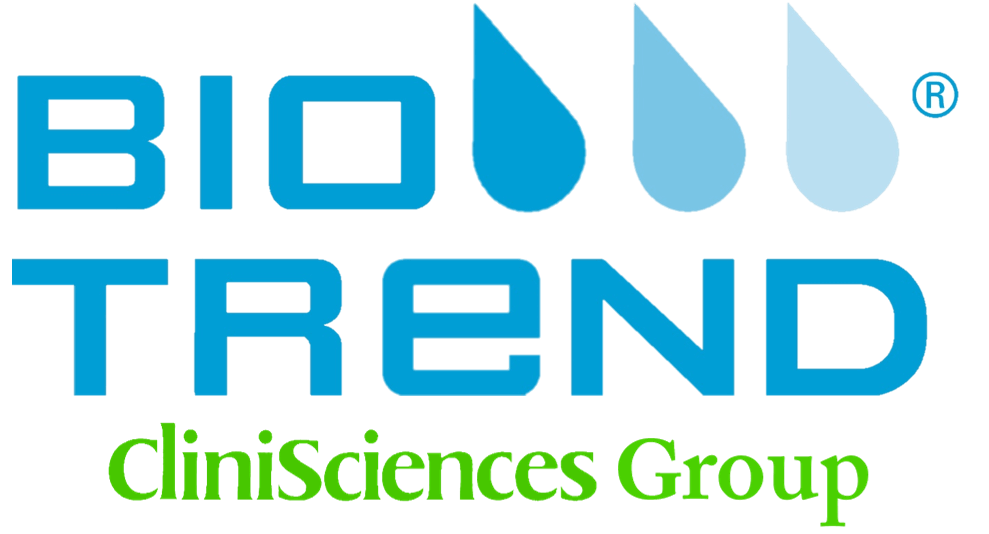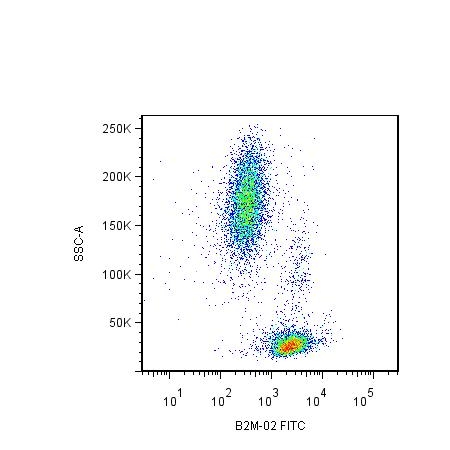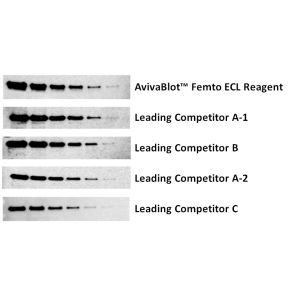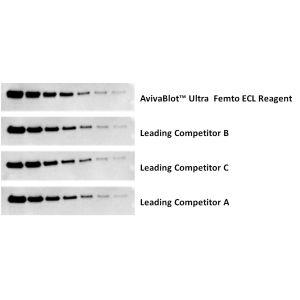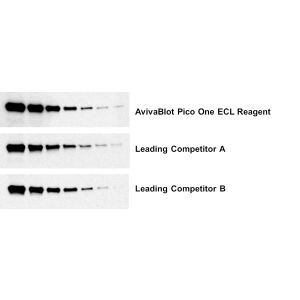beta2-microglobulin antibody
Katalog-Nummer OAEE00030
Size : 0.1mg(C100)
Marke : Aviva Systems Biology
| Datasheets/Manuals | Printable datasheet for beta2-microglobulin antibody |
|---|
| Predicted Species Reactivity | Human|Porcine |
|---|---|
| Product Format | Phosphate buffered saline (PBS), pH 7.4, 15 mM sodium azide |
| Clonality | Monoclonal |
| Clone | B2M-02 |
| Isotype | IgG1 |
| Host | Mouse |
| Conjugation | Biotin |
| Application | ELISA|FC|IHC-P|WB |
| Reconstitution and Storage | 2°C to 8°C |
| Immunogen | Purified isolated human beta2-microglobulin. |
| Purification | Purified by size-exclusion chromatography |
| Concentration | 1 mg/ml |
| Specificity | The antibody B2M-02 reacts with beta2-microglobulin (beta2M) associated with cell-surface MHC Class I molecules and other membrane antigens as well as with soluble beta2-microglobulin. Beta2M is a 12 kDa Ig like glycoprotein expressed on lymphocytes, thymocytes, monocytes, granulocytes, platelets, endothelial cells and epithelial cells. It is absent on erythrocytes. |
| Formulation | Biotin |
| Storage Buffer | Phosphate buffered saline (PBS) with 15 mM sodium azide, approx. pH 7.4 |
| Reference | Hilgert I, Horejsi V, Kristofova H.: The use of murine monoclonal antibody B2M-01 for detection and purification ofhuman beta 2-microglobulin. Folia Biol (Praha). 1984;30(6):369-76. Drbal K, Angelisova P, Hilgert I, Cerny J, Novak P, Horejsi V.: A proteolytically truncated form of free CD18, the common chain of leukocyte integrins, as a novel marker of activated myeloid cells. Blood. 2001 Sep 1;98(5):1561-6. |
|---|---|
| Gene Symbol | B2M |
| Gene Full Name | beta-2-microglobulin |
| Alias Symbols | beta chain of MHC class I molecules, beta-2-microglobin, beta-2-microglobulin, IMD43. |
| NCBI Gene Id | 567 |
| Protein Name | Beta-2-microglobulin |
| Description of Target | Component of the class I major histocompatibility complex (MHC). Involved in the presentation of peptide antigens to the immune system. Exogenously applied M.tuberculosis EsxA or EsxA-EsxB (or EsxA expressed in host) binds B2M and decreases its export to the cell surface (total protein levels do not change), probably leading to defects in class I antigen presentation (PubMed:25356553). |
| Uniprot ID | P61769 |
| Protein Accession # | NP_004039.1 |
| Nucleotide Accession # | NM_004048.2 |
